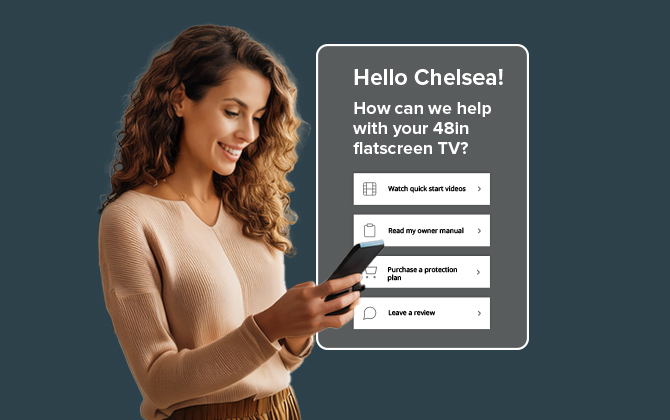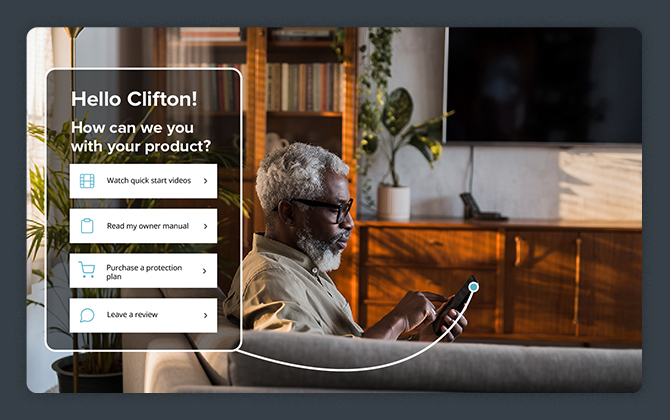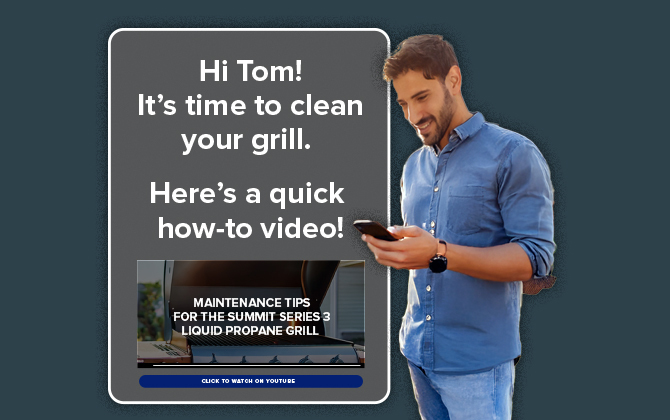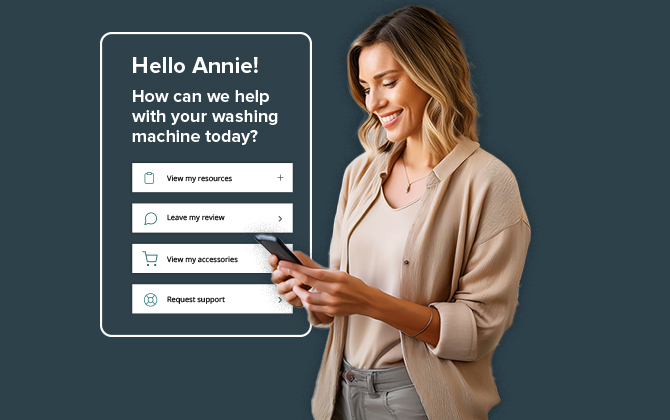1 min read
Post-purchase is your new growth engine – A Word from the CRO
By Matt Parsons, Chief Revenue Officer at Registria What product brand teams need to get right in 2026 Like it or not, the post-purchase is where...
OUR SOLUTIONS
OUR TECHNOLOGY
5 min read
Registria : Sep 17, 2025 8:45:00 AM

If you’re a CX or marketing leader at a product brand, you’re probably feeling the squeeze. Tariffs are climbing, inflation is sticking around and consumer spending is harder to predict. Margins are under pressure from every angle. So, how do you grow without throwing more money on the table?
In this article, we’ll explore ways companies adapt to rising tariffs and why focusing on customer retention in an inflationary economy is your strongest lever for growth.

The impact of rising tariffs on businesses isn’t subtle. In 2025, the U.S. imposed $20 billion in new tariffs on Chinese imports alone, with a focus on consumer electronics, appliances and raw materials used in manufacturing. That pressure trickles down into your margins, your production budgets and quarterly targets.
For product brands, especially in the durable goods sector, rising costs are tough to absorb. Companies across industries are renegotiating with suppliers and cautiously raising prices to stay afloat. Even lifestyle retailers like Urban Outfitters, as Barron’s reports, are taking this approach, signaling a broader shift. Others are seeking operational efficiencies rather than passing costs on to consumers.
You may not be able to control the economic climate, but here’s what you can control: your customer relationships. When acquisition is more expensive and less predictable, doubling down on the customers you already have is the sustainable approach.
You’ve already earned their trust. Now it’s time to keep it.
Retention is a smart way to grow that’s often overlooked. According to HubSpot, it costs five to 25 times more to acquire a new customer than to retain an existing one. And a modest 5% bump in retention can increase profits by up to 95%.
And long-term customers do more than buy again:
In uncertain economic times, customer retention during inflation becomes a competitive advantage. Word of mouth turns into star ratings, social proof and visibility. A dynamic post-purchase experience builds loyalty by delivering real value beyond the sale. It creates brand advocates and reduces reliance on paid media, powering a loyalty engine that keeps working long after checkout.

Think about the last product you bought that felt truly worth it. Maybe it came with a quick-start guide that actually helped. Or maybe support solved your issue in one message, without making you repeat yourself. Those moments stick. These days, just having a good product isn’t enough. What happens after the purchase is where brands either build trust or lose it.
In a tight economy, that post-purchase experience becomes even more critical. People want to get full value from the things they already own. They want to feel supported. And they want to know that the brand still sees them, not just as a sale, but as part of a longer journey. That means:
In short, a relationship that evolves and goes beyond checkout. Explore how better onboarding helps build loyalty.
If loyalty is earned after the sale, then CX is where it’s won, or lost. That’s especially true when margins are tight and price hikes aren’t an option. McKinsey reports that product companies are doubling down on durable, efficient and affordable value. But to do that, brands have to get more from every customer interaction, creating a more dynamic, post-purchase journey, without overloading support or bloating the budget.
That shift forces the question: how do you cut costs without compromising the experience?
Leading brands use product-led CX to close the gap. For example, tools like Registria’s Concierge let customers scan a QR code on the product to access setup guides, warranty info and personalized offers. That’s support built right into the product.

Other brands trigger contextual offers based on real ownership data. This means they can send maintenance kits for older models, recommend accessories after setup and offer protection plans when customers register. These touchpoints don’t just improve CX, they reduce the load on support teams and help create a loyalty engine that runs on relevance
The key is visibility. With the right platform, you track who owns what, how they use it and what they need next. That insight lets you support smarter, spend less and build stronger customer relationships.
These approaches are setting a new standard, one where post-purchase connection drives long-term value. So how can your brand put it into practice?
Here’s how smart product brands are strengthening customer relationships without inflating costs and how you can do the same. Each strategy below can boost retention, reduce support load and help your brand stay top of mind, after the sale.
A clear setup experience can make or break the relationship. Start with a scannable QR code that opens a welcome hub tailored to the product. Include short setup videos, a quick-start checklist, registration prompts and links to support.
Follow up when needed. If someone registers but doesn’t finish onboarding, send a helpful nudge. Timed messages tied to behavior cut churn and build confidence from day one.
When customers reach for your product, make sure it leads them somewhere. Add a scannable QR code or printed URL that opens a branded support page tied to the exact item they own. Give them quick access to manuals, warranty info, chat support or repair guides so customers won’t have to dig around.
By turning the product into a gateway for support and value, you create a lasting association between the item and the ownership experiences. It becomes second nature to look to your brand for what’s next.
When customers need help, they don’t want to hunt for it. They want quick, simple answers on their terms.
A self-service channel like Concierge can make all the difference. Instead of flooding your support team with repeat questions, give customers a single place to go. With a quick scan or click, they can access setup videos, manuals, claim forms or FAQs—tailored to the product they own.
Concierge works on their time and their chosen device. And it quietly reduces the load on your team while building trust with your customers.
Skip the generic offers. Use ownership and behavior data to tailor what each customer gets. That could mean a filter bundle for their air purifier, a service reminder right before warranty expiry or a care guide 9 months into ownership.
The more relevant your touchpoints are, the more loyal your customers become.
You’re getting signals all the time: product scans, support requests, reorders, drop-offs. Use those to create action plans. Someone scanning often? Time to upsell. Long silence? Re-engage with something useful.
Ask for feedback when it counts. If a support case is closed, follow up. If customers ignore emails, change the channel or content. Then act on what you learn.
Customers don’t think about your brand daily. But when you show up with value, they remember.
Start by delivering timely, tailored moments after the sale, such as seasonal tips, refill reminders or “pro move” how-tos based on what they own. Each one reinforces the value of their purchase and keeps your brand in view.
By building a dynamic post-purchase experience that adapts to their needs, you create a loyalty engine that runs on relevance, not just reminder campaigns.
Retention is the most reliable path to sustainable growth when budgets are tight and tariffs are constantly changing.
Here’s how to build a dynamic retention strategy - you don’t need to implement all of them at once, but the more signals you act on, the stronger your customer relationships become.
Retention is the most reliable path to sustainable growth, especially during times of inflation and unstable tariffs. Use these strategies to respond to the rising tariffs’ impact on businesses, adapt your CX and strengthen customer loyalty.
Bonus: Use Concierge by Registria to power all the above in one platform, from personalized onboarding to product-triggered support, dynamic loyalty touchpoints and ownership insights.
Take the self-guided Concierge tour to see it in action.

1 min read
By Matt Parsons, Chief Revenue Officer at Registria What product brand teams need to get right in 2026 Like it or not, the post-purchase is where...

Today’s product brands are up against a lot. Between rising costs, supply chain challenges, and growing competition from both legacy and DTC brands,...

One of the biggest challenges for product brands today is simple: knowing who their customers are. This is especially true for brands that sell...